| « Previous: Return to Assignment 4 description | Next: student work sample » |
By Dawn Wendell

Three yarns made for this assignment. (Final yarn in the foreground.)
I made yarn! Well, actually, I made 3 yarns, but I will only discuss my final yarn in detail.
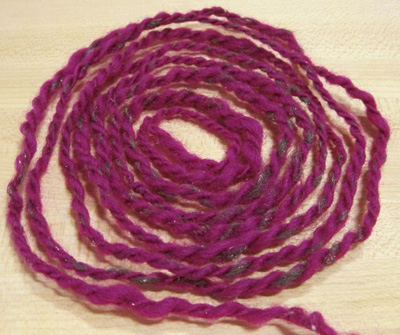
The final yarn
My final yarn is a two-ply wool-steel blend. One of the plies is wool-only and the other is a mixture of conductive steel fibers and wool. The plies were spun using a drop-spindle and then plied by hand. The yarn was not soaked in hot water, so the twist isn't set and its not quite a "finished" yarn. However, I am happy with it! My goal was to learn to spin, and by spinning both a normal wool ply and a wool-steel blend, I was able to experiment with the difference between spinning natural and man-made fibers. Also, I was hoping to make a conductive yarn but I wasn't sure how much steel I needed to spin into the yarn for that. Luckily the amount of steel I added to the second ply was enough to have good conductance over the whole 2 meter yarn.
The steel fibers didn't integrate very well with the wool even though I was trying to combine them evenly while spinning.
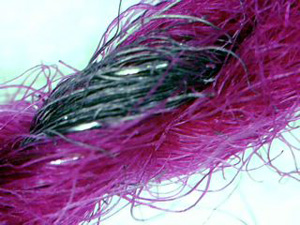
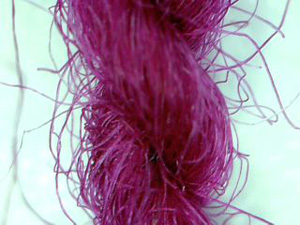
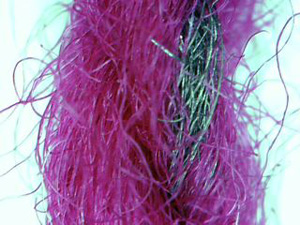
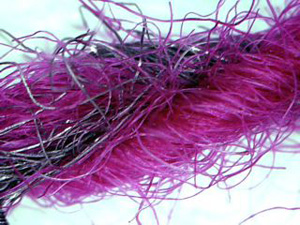
Close-up pictures of the yarn show the conductive steel fibers running through the second ply.
Yarn Specifications
The following properties of the yarn were measured:
| Properties | Measurements |
|---|---|
| Diameter | 2-5 mm |
| Total yarn length | 2.03 m |
| Ply | 2 |
| Fiber length | 95 mm |
| Twist direction | S-twist |
| Twist | 3-4 turns/inch |
| Conductivity | 1 ohm/inch |
Extra Credit Measurements: Tex
I also measured the tex of the yarn. First I weighed the yarn I made. Then I converted its weight into a weight (in grams) per length (meters), which was 2.365 grams/meter. Since tex is the weight of 1000 meters of yarn, I multiplied 2.365 by 1000 to find that the tex of my yarn is 2,365.
Thoughts, Improvements, Suggestions
- Spinning is HARD – This video makes it look easy!
theartofmegan. “Spinning Yarn on a Drop Spindle – Tutorial.” YouTube. May 13, 2008. Accessed December 2, 2010. http://www.youtube.com/watch?v=7gXTWgMeMgI
It takes a lot of patience and coordination to do correctly. However, I think this assignment was good because 2 yards was a reasonable amount to make, not too much, not too little. - The metal fibers seem soft at first, but the definitely "shed" more, so little bits of metal ended up all around where I was spinning. Also, I found that I couldn't run my hand along the roving as tightly with the steel because it was more prickly than the wool when being held tightly.
- Plying magnifies any inconsistencies in your tension from spinning. Luckily art yarns are very pretty! :-)
| « Previous: Return to Assignment 4 description | Next: student work sample » |
